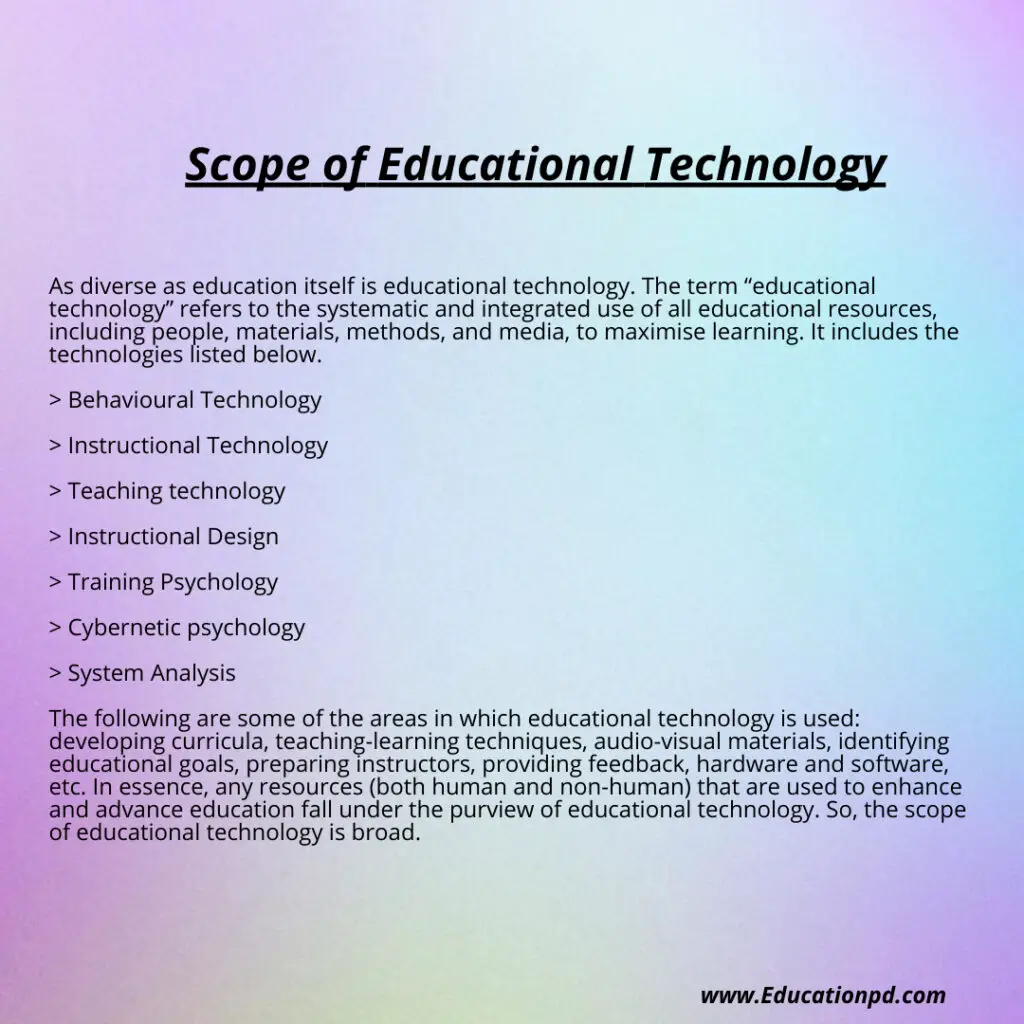Back to: Educational Technology in Education B.ed Notes, M.A Notes, IGNOU Notes
Scope of Educational Technology
As diverse as education itself is educational technology. The term “educational technology” refers to the systematic and integrated use of all educational resources, including people, materials, methods, and media, to maximise learning. It includes the technologies listed below.
- Behavioural Technology: A key element of educational technology is behavioural technology. To change the behaviour of the instructor and students in line with the learning objectives, it emphasises the application of psychological concepts in learning and teaching.
- Instructional Technology: A network of methods or tools used to achieve a certain set of learning objectives is referred to as instructional technology. Technology for education that uses psychological, sociological, and scientific concepts and information to help students achieve their individual learning goals is referred to as instructional technology.
- Teaching technology: Teaching is a social and productive activity. Teaching is a sequence of behaviours that encourage learning via interpersonal relationships. The use of scientific, philosophical, and social knowledge in teaching is known as teaching technology.
- Instructional Design: In addition to the learning principles, new methodologies, working tools, and teaching circumstances were thought to be crucial to affect the necessary changes in students’ behaviour. Instructional design is the sum of all these.
- Training Psychology: Training psychology is a significant instructional strategy. Its creation came about as a consequence of a study done on challenging training circumstances and issues. According to training psychology, the entire training assignment should be broken down into three sections: (1) Preparing an outline of the task. (2) Task analysis (3) Putting the task in sequence. The main role of training psychology is in Teacher Education.
- Cybernetic psychology: Training psychology includes cybernetic psychology. In cybernetic psychology, people are treated as machines. Cybernetic psychology places a strong emphasis on the idea that all forms of feedback work by influencing the pupil’s behaviour to bring about the desired changes.
- System Analysis: System Analysis is a problem-solving process that involves identifying the management’s needs, employing the best way to address those needs, and evaluating the results.
The following are some of the areas in which educational technology is used: developing curricula, teaching-learning techniques, audio-visual materials, identifying educational goals, preparing instructors, providing feedback, hardware and software, etc. In essence, any resources (both human and non-human) that are used to enhance and advance education fall under the purview of educational technology. So, the scope of educational technology is broad.
